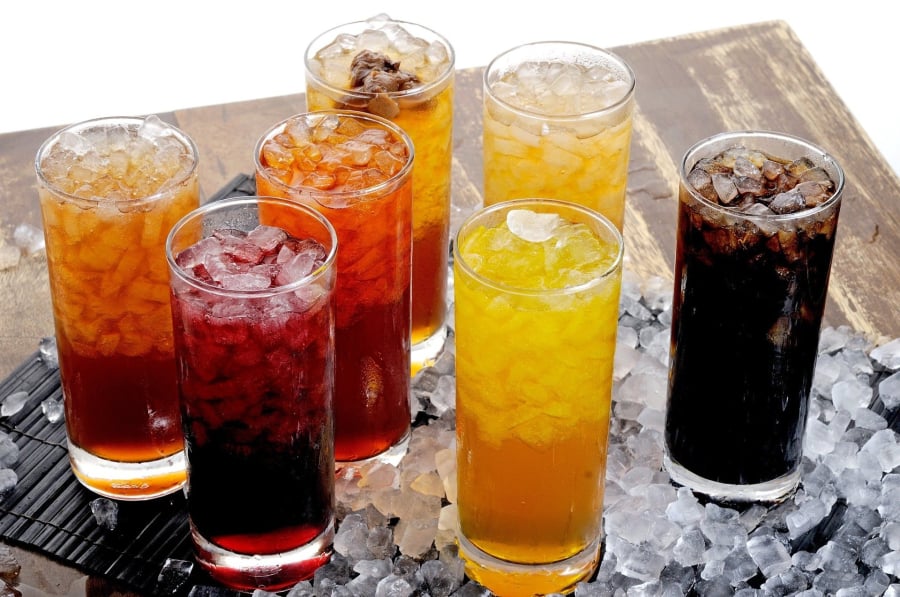Stroke is a leading cause of death and disability in Vietnam. According to statistics from the Ministry of Health, tens of thousands of stroke cases are recorded in the country each year, with high rates of mortality and severe sequelae. Worryingly, many of us unknowingly consume familiar and frequent foods in our daily diet that may silently increase the risk of stroke. Here are five common food types you should be cautious about to protect your cardiovascular and brain health.
1. Deep-fried foods
Deep-fried foods such as fried chicken, french fries, and doughnuts are always appealing due to their delicious taste and crispy texture. However, these foods typically contain high levels of trans fats and saturated fats, which are known to increase bad cholesterol (LDL) in the blood. When cholesterol builds up, it forms plaques in the arteries, obstructing blood flow to the brain and thus increasing the risk of ischemic stroke. The habit of frequently consuming deep-fried foods, especially when using reused oil, also exacerbates inflammation in the body and accelerates atherosclerosis.
To mitigate the risks, prioritize healthier cooking methods such as steaming, boiling, or grilling. If you can’t completely give up deep-fried foods, opt for high-quality vegetable oils and limit your consumption frequency.

2. Processed and salty foods
Processed meats like sausages, cold cuts, canned fish, instant noodles, and fast food typically contain high levels of salt, far exceeding the recommendations of the World Health Organization (WHO). Salt increases blood pressure, a leading risk factor for stroke. When sodium from salt accumulates in the body, it leads to water retention, putting extra pressure on the blood vessel walls. Over time, this can damage blood vessels, form blood clots, or cause cerebral hemorrhage.
Vietnamese people have a habit of consuming salty foods, from fish sauce and dipping sauces to stews and salted dishes. To protect your health, reduce salt intake, and favor natural herbs, lemon, or fresh chili peppers to add flavor without harm.
3. Sugary drinks
Carbonated soft drinks, bubble tea, canned coffee, and industrially produced fruit juices are becoming increasingly popular, especially among young people. These beverages often contain high amounts of sugar, which can increase the risk of obesity, type 2 diabetes, and cardiovascular disease—all closely linked to stroke. Sugar in these drinks not only spikes blood sugar levels but also causes chronic inflammation, damages the endothelial lining of blood vessels, and promotes atherosclerosis.
Instead of bottled drinks, opt for filtered water, unsweetened green tea, or freshly made fruit juices at home. Limiting daily sugar intake as per WHO recommendations (less than 10% of total energy intake) will significantly reduce the risk of stroke and other diseases.

4. Red meat and organ meats
Red meats such as beef and pork, especially organ meats like intestines, stomach, and liver, are commonly found in Vietnamese family meals. While they are rich in protein and iron, these foods also contain high levels of saturated fats and cholesterol. Excessive consumption raises bad cholesterol, puts pressure on the cardiovascular system, and increases the risk of stroke. Additionally, dishes made from organ meats are usually cooked with excessive salt or deep-fried, further exacerbating health risks.
As alternatives, incorporate healthier protein sources like fish, poultry without skin, or beans. If you still want to enjoy red meat, opt for lean cuts and limit consumption to no more than 2-3 times a week.
5. Refined carbohydrate-rich foods
White rice, white bread, refined pasta, and baked goods made from white flour are familiar staples in daily meals. However, refined carbohydrates have a high glycemic index, causing a rapid increase in blood sugar levels after consumption. This not only increases the risk of diabetes but also puts pressure on the vascular system, damaging blood vessel walls and promoting blood clot formation. The habit of consuming excessive refined carbohydrates is also associated with obesity and metabolic syndrome, both of which are stroke risk factors.
To improve your diet, switch to whole grain alternatives such as brown rice, oatmeal, or whole wheat bread. These foods are rich in fiber, help stabilize blood sugar levels, and support cardiovascular health.
How to reduce the risk of stroke?
In addition to limiting the consumption of the above-mentioned food types, maintaining a healthy lifestyle is crucial for stroke prevention. Regular exercise, stress management, smoking cessation, and maintaining a healthy weight are effective measures. Additionally, regular health check-ups to monitor blood pressure, cholesterol, and blood sugar levels can help identify potential risks early on.
“6 Summer Habits That Could Lead to a Stroke: Are You at Risk?”
The oppressive heat is not only uncomfortable but also poses significant health risks, with heatstroke being a silent and deadly threat that is increasingly affecting younger individuals. What’s concerning is that many seemingly harmless summer habits can quietly elevate this risk. Are you aware of the precautions to take?
The Four Hourly Showers to Avoid: A Guide to Healthy Hair Care
“Superstitions surrounding the timing of hair washing are prevalent in many cultures, with certain hours of the day deemed inauspicious. These beliefs hold that washing your hair during these hours can lead to adverse health effects, including an increased risk of stroke. However, it’s important to separate fact from fiction. While maintaining a healthy hair care routine is important, there is no scientific evidence linking hair washing to an increased propensity for strokes. So, feel free to wash your locks whenever suits your schedule, and rest assured that your health is not at risk from this age-old superstition.”



































